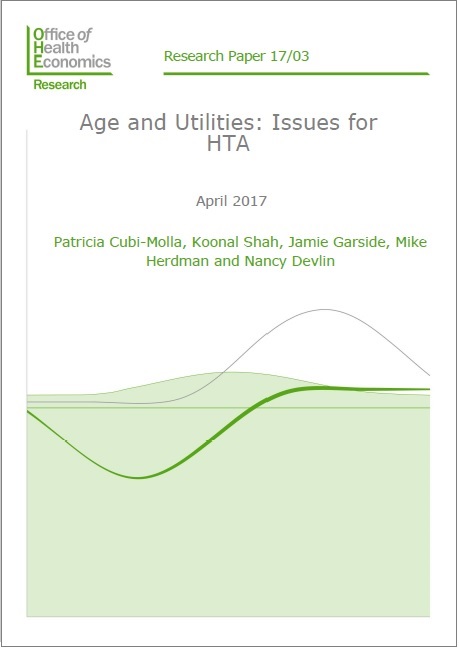Several studies have found differences in health state values by age. We investigate whether and how age affects respondents’ Time Trade-Off (TTO) and Visual Analogue Scale…
Several studies have found differences in health state values by age. We investigate whether and how age affects respondents’ Time Trade-Off (TTO) and Visual Analogue Scale (VAS) valuations of hypothetical EQ-5D health states using data from the 1993 MVH UK valuation study.
Several studies have found differences in health state values by age. We investigate whether and how age affects respondents’ Time Trade-Off (TTO) and Visual Analogue Scale (VAS) valuations of hypothetical EQ-5D health states using data from the 1993 MVH UK valuation study.
The authors identify the existence of an inverse U-shaped age-utility pattern, with respondents in their forties tending to provide the highest values for the majority of the health states analysed. The TTO values obtained from the oldest respondents are systematically (and significantly, for the majority of profiles) lower than those obtained from younger age groups. Our study also finds that significant differences in values amongst age groups seem to be associated with profiles with level 3 in the mobility dimension or level 2 or 3 in the self-care dimension. VAS valuations appear to be less affected by age than TTO valuations.
The authors conclude the paper with a thought-provoking debateby assessing the arguments for and against about a case for using age-specific utilities in HTA.
Compared to previous research, this study analyses differences in utilities amongst a greater number of age-defined subgroups and at the individual health state level. It also examines how the findings relate to the various arguments for and against using age-specific utilities in HTA.
A revised version of this paper has been published in Quality of Life Research and can be downloaded from: https://link.springer.com/article/10.1007/s11136-018-2071-5
Please cite as: Cubí-Mollá, P., Shah, K., Garside, J., Herdman, M. and Devlin, N., 2018. A Note on the Relationship Between Age and Health-related Quality of Life. Quality of Life Research, PP. 1-5.

